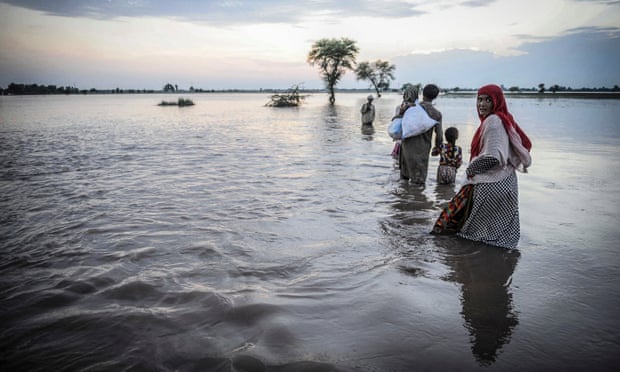By Fiona Harvey, The Guardian, May 16, 2016
 |
| Photo: Anadolu Agency/Getty Images |
New evidence that poorer countries will suffer the worst effects of climate change has shown that the number of hot days in tropical developing countries is likely to increase markedly as global warming takes hold.
It has long been expected that poor people would bear the brunt of climate change, largely because so many more of the world’s poorest live in tropical latitudes whereas, wealthier people tend to live in more temperate regions.
This is inverse to the generally accepted responsibility for climate change, which falls mainly on rich countries that benefited early on from industry, and thus have historically high emissions, compared with poorer countries that have only begun catching up in the past few decades.
It was only in 2014 that China’s per capita emissions caught up with those of people in the EU, even after years of above-average economic growth in China.
Those living in the poorest countries also have the most to lose, as so many depend on agriculture, which is likely to be badly affected by temperature rises and an increase in droughts, heatwaves and potential changes to rainfall that may lead to recurrent patterns of floods, droughts and higher intensity storms.
The study, led by the University of East Anglia, is the first to examine the link between cumulative carbon dioxide emissions and more frequent hot days.
Manoj Joshi of the UEA School of Environmental Sciences said: “Many of the poorest people in the world live in tropical latitudes, while many of the world’s wealthiest people live in mid-latitude climates. We know that low-latitude regions have much less variability in day-to-day temperatures when compared with the mid-latitudes, which means the signal of climate change emerges quite quickly, and because of this the frequency of extreme hot days increases rapidly too.”
The findings also call into question the commitments made at the landmark Paris conference on climate change last December, at which nations agreed to limit global temperature rises to no more than 2C, a threshold which scientists regard as the limit of safety, beyond which the ravages of climate change are likely to become catastrophic and irreversible.
However a 2C rise on average globally could still leave tens or hundreds of millions of people vulnerable to dramatic rises in their regional temperatures, which could make their current way of living impossible to maintain.
Governments are meeting this week in Bonn, the first meeting since the Paris agreement was signed.
No comments:
Post a Comment